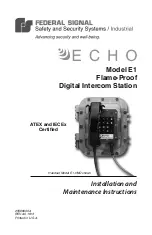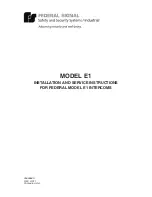
26
Rockwell Automation Publication 1606-RM100A-EN-P - July 2020
Power Supply - 24V, 5 A, 120 W, Single-phase Input Reference Manual
Parallel Use for Redundancy
Please note that there are variants with built-in redundancy available in the
XLE Series. Check XLE Series -Rx units.
1+1 Redundancy:
Devices can be paralleled for redundancy to gain higher system availability.
Redundant systems require a certain amount of extra power to support the
load in case one device fails. The simplest way is to put two devices in parallel.
This is called a 1+1 redundancy. In case one device fails, the other one is
automatically able to support the load current without any interruption. It is
essential to use a redundancy module to decouple devices from each other.
This helps prevent the defective unit from becoming a load for the other
device, which helps to ensure that the output voltage can be maintained.
1+1 redundancy allows ambient temperatures up to 70 °C (158 °F).
Pay attention that leakage current, EMI, inrush current, harmonics will
increase when using multiple devices. Recommendations for building
redundant power systems:
•
Use separate input fuses for each device.
•
Use separate mains systems for each device whenever it is possible.
•
Monitor the individual devices. Therefore, use the DC OK signal of the
device.
•
It is desirable to set the output voltages of all devices to the same value
(± 100 mV) or leave it at the factory setting.
N+1 Redundancy:
Redundant systems for a higher power demand are built in a N+1 method. For
example four devices, each rated for 5 A, are paralleled to build a 15 A
redundant system.
Pay attention that leakage current, EMI, inrush current, harmonics will
increase when using multiple devices.
Keep an installation clearance of 15 mm (0.6 in.) (left/right) between two
devices and avoid installing the devices on top of each other.
Do not use devices in parallel in mounting orientations other than the
standard mounting orientation or in any other condition, where a reduction of
the output current is required.
For N+1 redundancy the ambient temperature is not allowed to exceed
40 °C (104 °F).







































